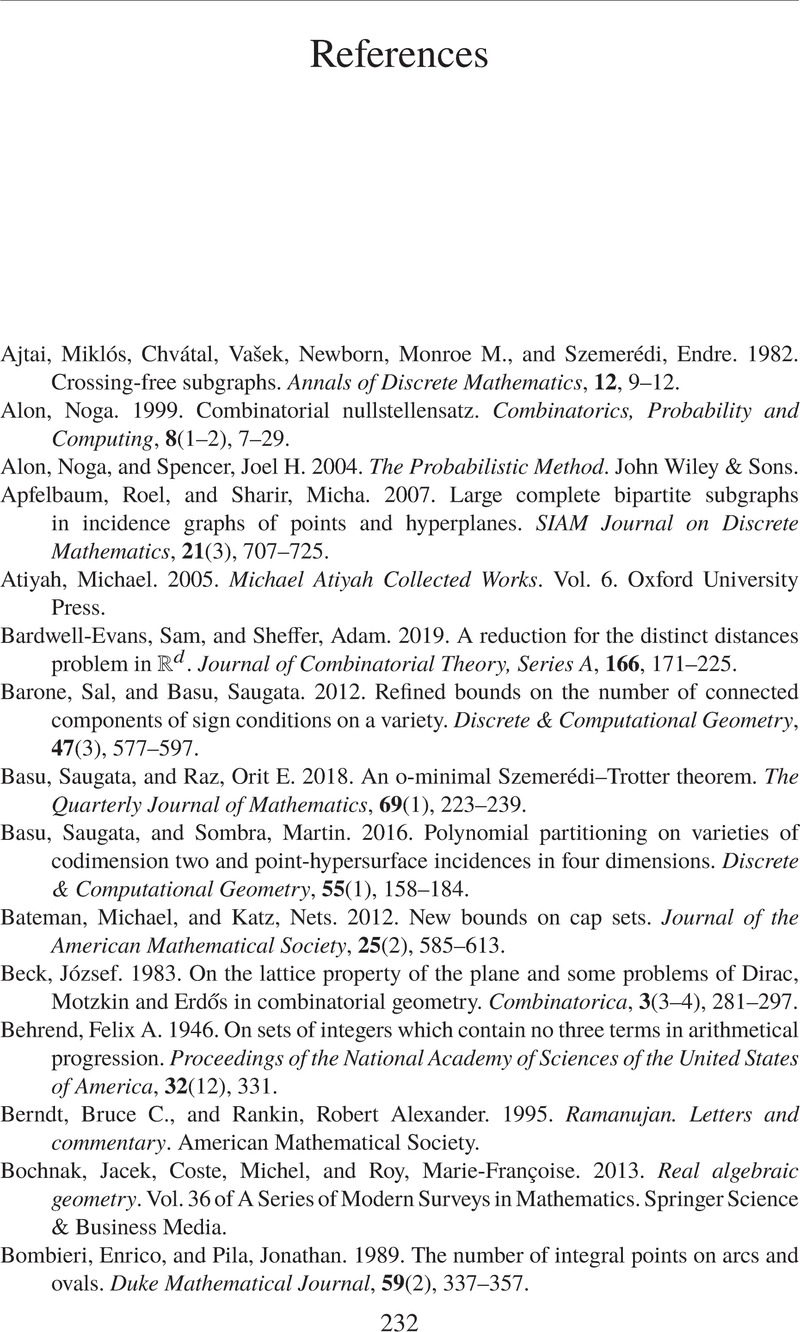Book contents
- Frontmatter
- Dedication
- Contents
- Introduction
- 1 Incidences and Classical Discrete Geometry
- 2 Basic Real Algebraic Geometry in R2
- 3 Polynomial Partitioning
- 4 Basic Real Algebraic Geometry in Rd
- 5 The Joints Problem and Degree Reduction
- 6 Polynomial Methods in Finite Fields
- 7 The Elekes–Sharir–Guth–Katz Framework
- 8 Constant-Degree Polynomial Partitioning and Incidences in C2
- 9 Lines in R3
- 10 Distinct Distances Variants
- 11 Incidences in Rd
- 12 Incidence Applications in Rd
- 13 Incidences in Spaces Over Finite Fields
- 14 Algebraic Families, Dimension Counting, and Ruled Surfaces
- Appendix Preliminaries
- References
- Index
- References
References
Published online by Cambridge University Press: 17 March 2022
- Frontmatter
- Dedication
- Contents
- Introduction
- 1 Incidences and Classical Discrete Geometry
- 2 Basic Real Algebraic Geometry in R2
- 3 Polynomial Partitioning
- 4 Basic Real Algebraic Geometry in Rd
- 5 The Joints Problem and Degree Reduction
- 6 Polynomial Methods in Finite Fields
- 7 The Elekes–Sharir–Guth–Katz Framework
- 8 Constant-Degree Polynomial Partitioning and Incidences in C2
- 9 Lines in R3
- 10 Distinct Distances Variants
- 11 Incidences in Rd
- 12 Incidence Applications in Rd
- 13 Incidences in Spaces Over Finite Fields
- 14 Algebraic Families, Dimension Counting, and Ruled Surfaces
- Appendix Preliminaries
- References
- Index
- References
Summary

- Type
- Chapter
- Information
- Polynomial Methods and Incidence Theory , pp. 232 - 239Publisher: Cambridge University PressPrint publication year: 2022

